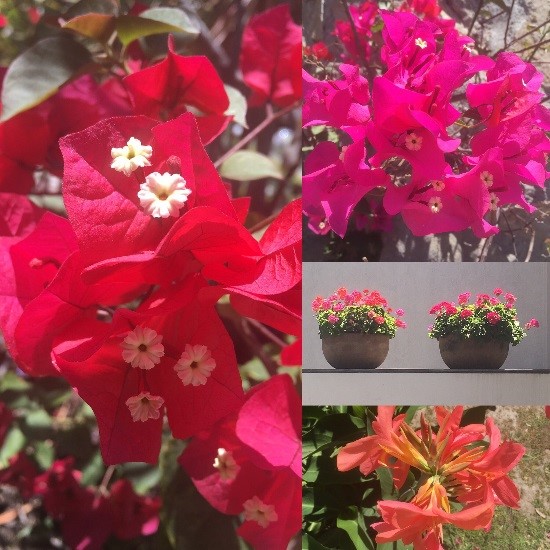July 2017: Academic and Volunteer Work by Nia Robinson
 I arrived in Guadalajara on June 29th. Although it was not the first time I had ever been to Guadalajara, it was the first time I arrived as a Rotary Scholar and members of the Zapopan Rotary Club were going to pick me up from the airport. I was excited, nervous, and keen to make a good impression, reapplying deodorant one last time before passing through customs. It was hot and humid and I had already begun to sweat. I was greeted at international arrivals by then club president Sra. Elena Mendiola and her husband, Sr. Manuel Romero. I speak enough Spanish to carry on a conversation and we had a pleasant car ride to my apartment in Zapopan. Before leaving, they invited me to join the Zapopan Rotary Club on Tuesday, July 4th, to celebrate el Cambio de Botones, an event that celebrates their annual change in leadership. It was a lovely event, held at the Club Puerta de Hierro.
I arrived in Guadalajara on June 29th. Although it was not the first time I had ever been to Guadalajara, it was the first time I arrived as a Rotary Scholar and members of the Zapopan Rotary Club were going to pick me up from the airport. I was excited, nervous, and keen to make a good impression, reapplying deodorant one last time before passing through customs. It was hot and humid and I had already begun to sweat. I was greeted at international arrivals by then club president Sra. Elena Mendiola and her husband, Sr. Manuel Romero. I speak enough Spanish to carry on a conversation and we had a pleasant car ride to my apartment in Zapopan. Before leaving, they invited me to join the Zapopan Rotary Club on Tuesday, July 4th, to celebrate el Cambio de Botones, an event that celebrates their annual change in leadership. It was a lovely event, held at the Club Puerta de Hierro. I met many Rotarians and their family members and watched as Sra. Mendiola spoke of the various projects and programs in which the Club had participated during the past year. After introducing the new president, vice president, secretary and treasurer, we sat down for a fantastic meal during which I learned several new Spanish phrases including: ‘más Mexicano que los huaraches.’
I met many Rotarians and their family members and watched as Sra. Mendiola spoke of the various projects and programs in which the Club had participated during the past year. After introducing the new president, vice president, secretary and treasurer, we sat down for a fantastic meal during which I learned several new Spanish phrases including: ‘más Mexicano que los huaraches.’We started the semester learning the pathologies of the gastrointestinal tract and the available treatment options. Concurrently, we are learning about pain and pain management and cultural competency and professionalism. It is a rigorous yet stimulating program, and I hit the ground running in preparation for our first exam.
My roommate and close friend Herandenny and I volunteer with an organization called Guimedic. Spearheaded by Dra Carolina Rosales, those who volunteer with Guimedic travel to underserved areas in and around Guadalajara with the goal of giving medical aid to people who are unable to visit a hospital or clinic. Dra Rosales takes 10 - 12 medical students, la brigada, with her every Sunday to a different location. She and a fellow doctor act as attending physicians while we students see patients and prescribe medication. On July 23, Herandenny and I went to the small town of Atequiza as part of la brigada. Thankfully, none or our patients presented with anything serious, although one man did have a perforated eardrum which was a treat to visualize through the otoscope. Obviously, the experience was incredibly fulfilling, yet I was struck with how many people felt they needed to be given medication to ‘cure’ whatever ailment they were experiencing. Virtually all the mothers who brought in children presenting with pharyngitis felt that their children needed antibiotics. No one can fault these mothers for being advocates for their children, but the truth is that most children were afebrile and showed nothing more than a mild erythema over their tonsils. These signs indicate a self-limited viral infection, not a bacterial infection; antibiotic treatment is not needed. I was reminded once again how important it is to not only treat people but to educate them on the pathophysiology of their illness. Education is an essential part of improving quality of life, and through these volunteer opportunities I am consistently inspired to become better at sharing my knowledge.